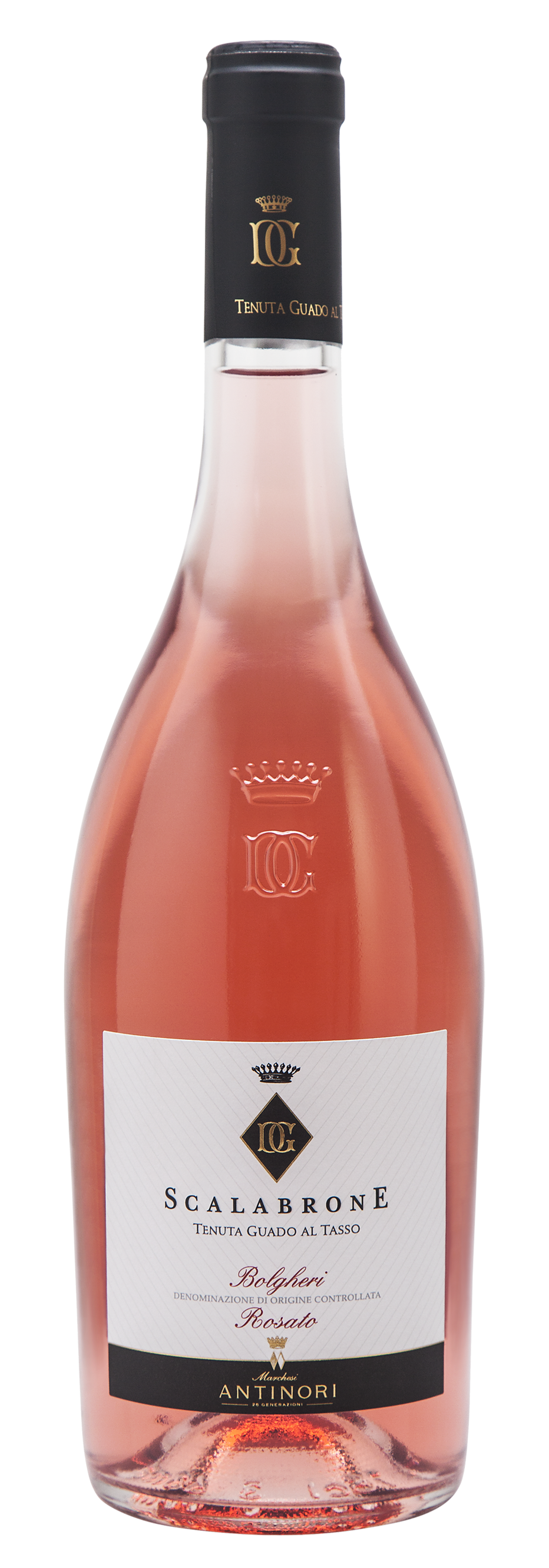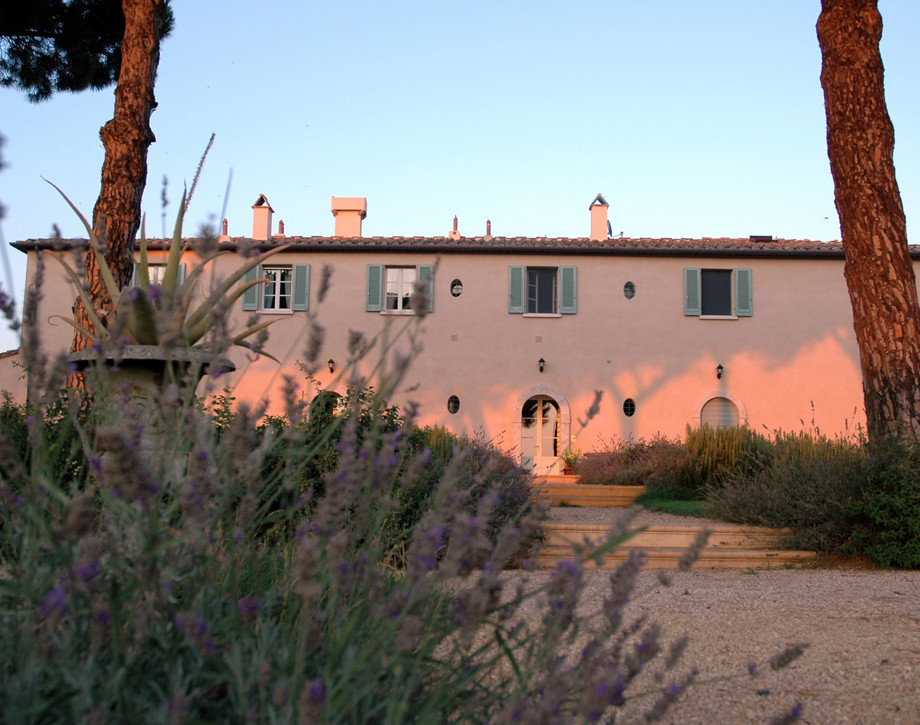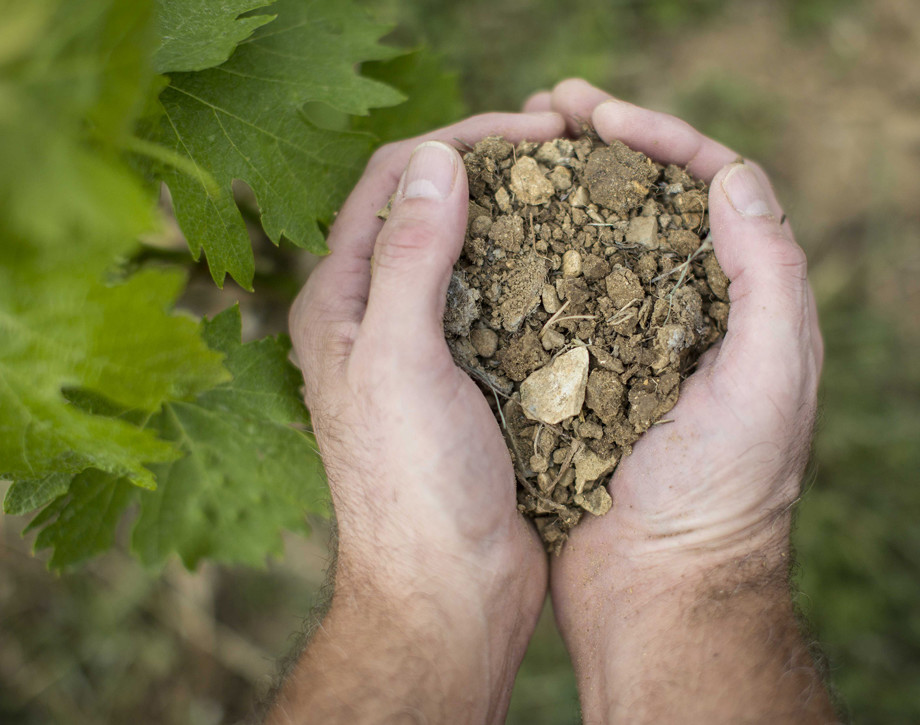Historical Data
The Wine
Three grape varieties, Cabernet Sauvignon, Merlot and a touch of Syrah, produce a rosé with decisive and intense aromas that reflect the characteristics of Bolgheri’s territory. The wine and vineyard take their name from a bandit named Scalabrone who roamed this area in the 18th century. Vineyards thrive on clay-loam based soils, mainly of alluvial origin, with rocky deposits.

The Wine
Three grape varieties, Cabernet Sauvignon, Merlot and a touch of Syrah, produce a rosé with decisive and intense aromas that reflect the characteristics of Bolgheri’s territory. The wine and vineyard take their name from a bandit named Scalabrone who roamed this area in the 18th century. Vineyards thrive on clay-loam based soils, mainly of alluvial origin, with rocky deposits.

Climate
The 2022 growing season in Bolgheri was afflicted by drought conditions that began in winter and lasted throughout most of summer. Mid-August brought a series of thunderstorms that proved to be beneficial for the vines’ most critical ripening period. These climate conditions guaranteed perfectly healthy fruit but, on the other hand, slowed down vegetative growth and reduced overall yields. At harvest time, the grapes had good balance between sugar levels and acidity with intense fruity aromas, attributable to the favorable rain showers in August. Harvesting operations began with Merlot on August 18th which was well in advance compared to seasonal averages. The harvest continued with Syrah and the other complementary varieties between the end of August and the beginning of September. Cabernet Sauvignon was picked mid-September bringing the harvest to a conclusion.
Vinification
Each grape variety was harvested and fermented separately. Grapes were destemmed, delicately crushed, and transferred to the press for a short maceration period of about 2-4 hours at a low temperature to intensify the richness of emerging aromatic compounds. After pressing, the must was transferred into stainless steel tanks where alcoholic fermentation took place at a controlled temperature of 16 °C (61 °F). Each individual lot was carefully and systematically evaluated and then blended. Scalabrone was bottled in the month of January 2023.
Historical Data
The Guado al Tasso estate is located in the small but prestigious Bolgheri DOC appellation on the coast of Upper Maremma, about one hundred kilometers southwest of Florence. This appellation has a relatively recent history as it was established in 1994 but has gained worldwide recognition as a new reference point in the international oenological scene. The estate covers an area of 1000 hectares (2500 acres), about 320 (790 acres) of which are planted with vines. The remainder is richly covered with wheat fields, sunflowers and olive groves, set in a beautiful plain encircled by rolling hillsides known as the “Bolgheri amphitheater” due to its particular shape. Guado al Tasso’s vineyards are planted to Cabernet Sauvignon, Merlot, Syrah, Cabernet Franc, Petit Verdot and Vermentino grapes; this last cultivated with both with white and red varieties. The nearby sea provides a mild climate with constant breezes mitigate summer heat and alleviate harsh winter weather, maintaining a clear sky and a high level of sunlight exposure. The vineyard, as well as the wine, takes its name from a bandit named “Scalabrone” who roamed this area in the early 1800’s, a local Robin Hood who raided the ships in Bolgheri’s old canal harbor.
Tasting Notes
Scalabrone 2022 is light peony pink in color. The nose presents intense notes of red berries especially ripe cherries and pomegranates accompanied by hints of candied citrus fruit. The palate is delightfully fruity, delicate with outstanding freshness and persistence.

Tenuta Guado al Tasso
The Guado al Tasso estate is located in the small but prestigious Bolgheri DOC, on the coast of upper Maremma, about one hundred kilometers southwest from Florence. This appellation has a relatively recent history, DOC Bolgheri was approved in 1995 and since then it has become an internationally recognized reference point for the Italian and international winemaking arena. The estate covers an area of 320 hectares (790 acres) planted with vines, set in a beautiful plain encircled by rolling hillsides known as the "Bolgheri Amphitheatre" due to its particular shape. The vineyards are planted to Cabernet Sauvignon, Merlot, Syrah, Cabernet Franc, Petit Verdot and Vermentino. The nearby sea provides a mild climate with constant breezes that mitigate summer heat and alleviate harsh winter weather, maintaining a clear sky and a high level of sunlight exposure.

Soil
Tendentially sandy, deep, fresh, rich in nutrients.
















